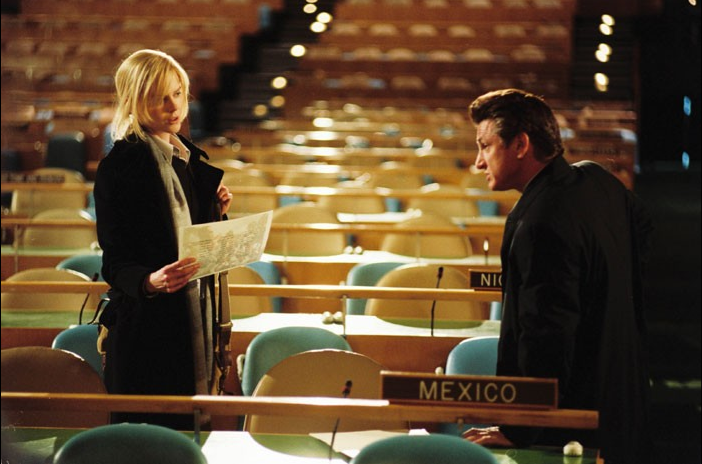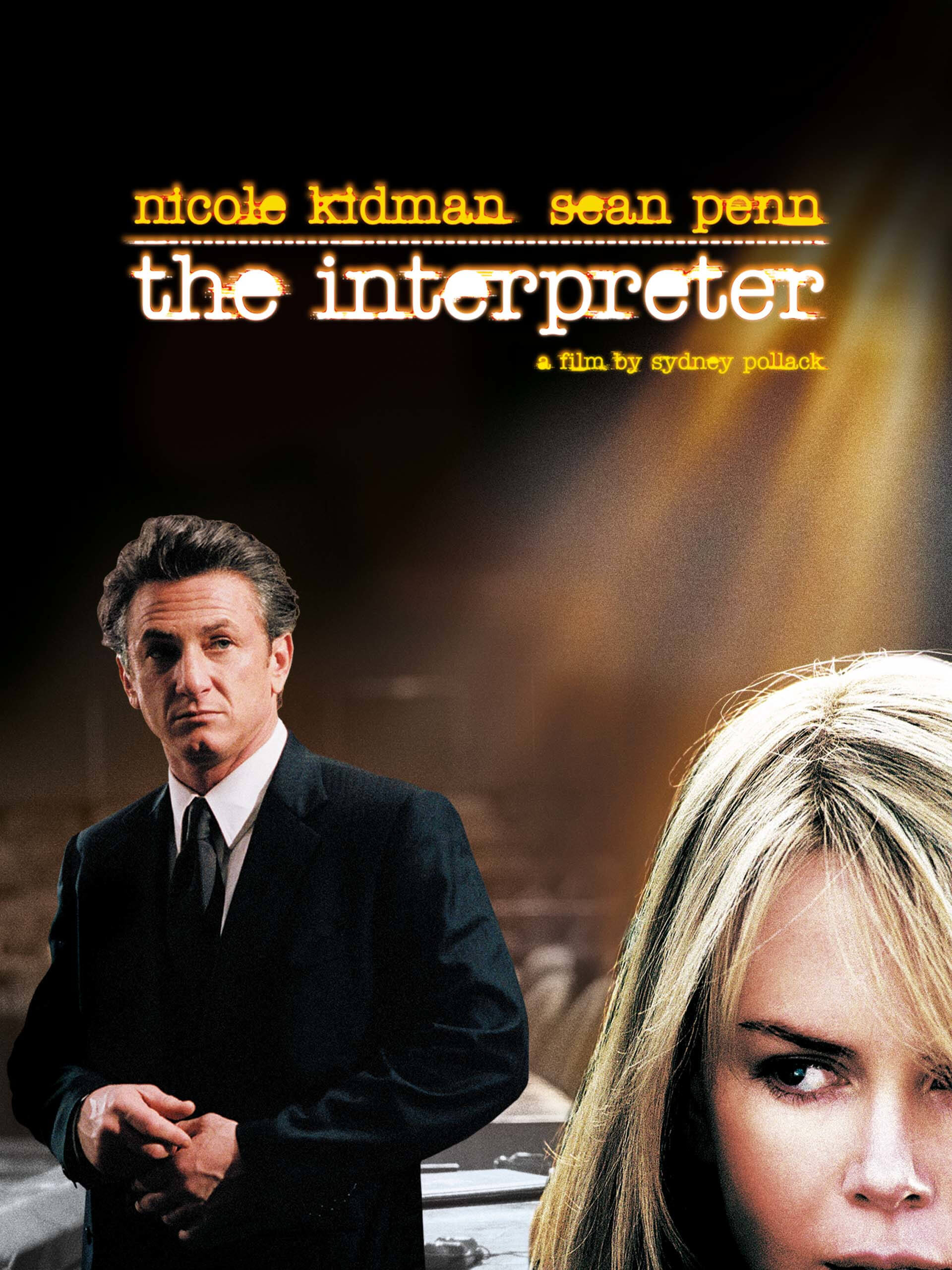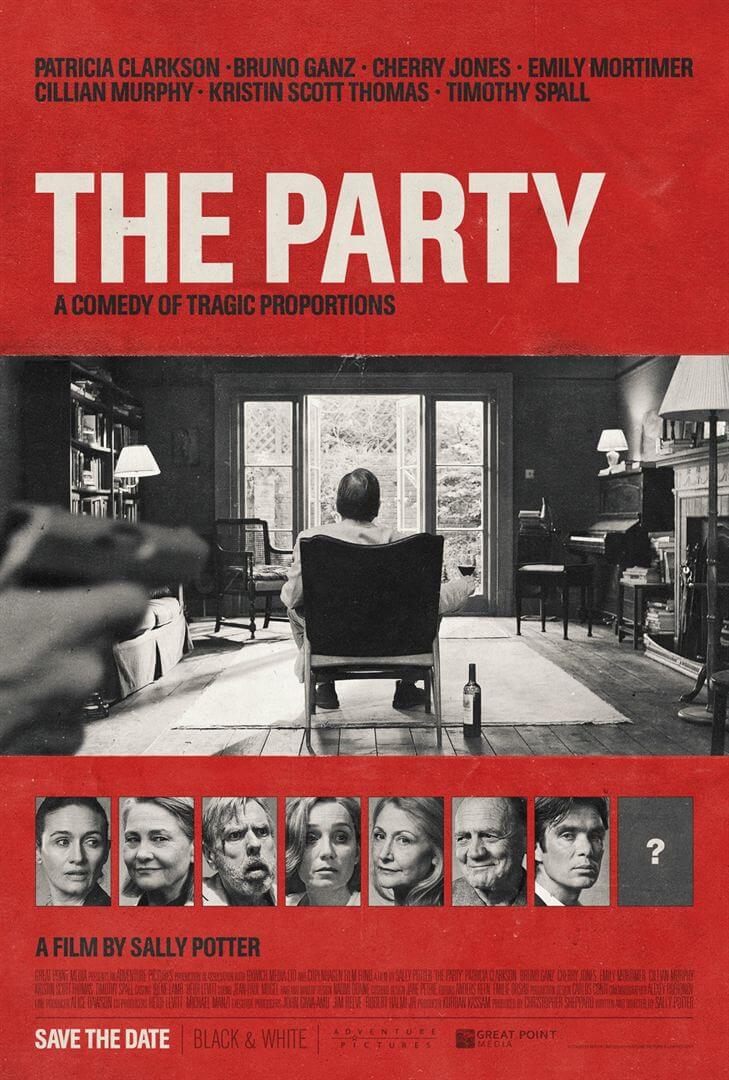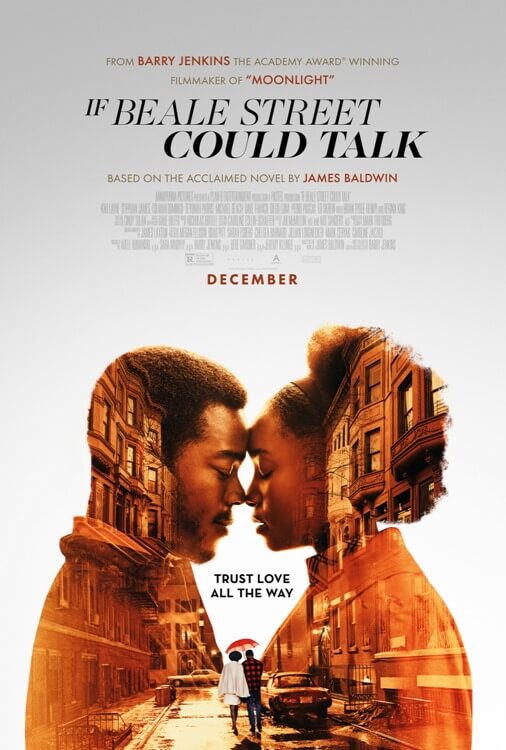[after every failed coup attempt against the fascists at the local chipotle, contributing writer and “free guac” revolutionary marrrrrrr sits down to prepare a sad, sad, guacamole-less meal and watch a political thriller for inspiration. this is Midnight Movies.]
film: The Interpreter (2005)
food: chicken-flavored ramen w/ sausage and peppers
pre-game: thriller from sydney pollack starring nicole kidman, sean penn and catherine keener. involves an interpreter (kidman) overhearing an assassination plot. got mostly mediocre reviews from critics, but in the mood for some international intrigue and it’s been waiting in my queue for a while. will return… eventually.

post-game: Sydney Pollack’s The Interpreter (2005) credits five writers (two for the story, another three for the screenplay) and, to be completely up front about it, it felt like about four too many.
watching it wasn’t an awful, or even regrettable experience. but it gives the sensation as if you’re viewing a much better movie through a fun-house mirror of executive meddling and focus testing. the producers hired an extremely competent and well-known director in Pollack (Three Days of the Condor (1975) and Tootsie (1982) among several others), two bona fide a-list stars (Nicole Kidman and Sean Penn), and even successfully lobbied to be the first film ever partially shot at the u.n. headquarters in new york (allegedly to save money after they realized building a mock hq in toronto was too cost-prohibitive), and by golly were they going to make their money back.
i don’t have personal knowledge of the production process of The Interpreter, but it feels easy enough to imagine:
start with an intriguing, if not entirely original, premise (see The Man Who Knew Too Much (1934/56)): a united nations interpreter accidentally overhears a veiled threat against an african leader/dictator.
cast Nicole Kidman. she’s white, so you’ll have to name the protagonist silvia broome and give her a complicated backstory for why she can speak a rare african dialect. so far, so good.
cast Sean Penn as the secret service agent that catches the case. name him tobin keller and saddle him with a recently dead wife so that Penn’s got something to do.
“i know! why don’t we let them bond over their shared grief?”
“but what about the plot?”
“forget the plot! we’ve got Penn!”
“i guess we can just throw in a bombing, a shoot-out, and then a showdown and call it a day. that’s standard thriller stuff, right?”
“now, you’re getting it.”
it’s at this point in the process that the film becomes, at minimum, two disjointed movies working against each other: one, a character-driven meditation on vengeance and mourning. the other, a political thriller. (meanwhile, nearly everything else feels like an afterthought. dot woods, teller’s wise-cracking partner (a great, but under-used, Catherine Keener) reeks of uncredited punch-up).

the character drama half almost works. to the movie’s credit, the two leads develop an intimate bond that doesn’t end in romance, but said bond and how it’s supposed to change both characters still feels rushed and heavy-handed. at one point, broome tells keller of a ritual practiced in her fictional homeland of Matobo: the killer of an innocent victim is set adrift in a river with weights tying them down. the family of the deceased can decide to either save the killer or let them drown. if the family saves the killer, they have to accept the lack of justice, but they will be released from their sadness. if they let the killer drown, they will mourn the rest of their lives.
yes, this metaphor is brought up again, multiple times, at crucial junctures in the plot. no, it is not subtle.
(incidentally, i don’t know if this is a real ritual, but even money says it’s a tribal fantasy created by writer #4).
as for the thriller itself: at one point keller asks broome if it’s just a coincidence that one of the only people that happen to speak (the constructed language) Ku overhears the threats being made late at night in the general assembly. the movie, bafflingly, never answers this question. there is no explanation given as to who made the threats (implied to be some combination of black villains, who, ultimately, aren’t given much to do on screen aside from look menacing) or as to why broome happened to overhear it.
and, for good measure, here are some more questions never answered: why do the villains go after broome once she’s already reported the threat? she’s not their target, and she has no new information to share. is it spite? or is it just because this is the type of thing that villains do in thrillers because there needs to be a shoot-out for no reason and some artificial tension? and why do the villains try to take out one of their targets with a bomb on a new york city bus instead of using a more clandestine method? it’s implied the reason is to shore up credibility for one character’s claims of “terrorism from rivals,” but that looks even sillier when all the rivals start dropping one by one.
these questions wouldn’t be so frustrating if it weren’t so likely that the film was revised and rewritten before the final cut. a throwaway line explaining how the secret service was able to get an apartment across from broome’s to stake her out was obviously dubbed in post. there are cannonball sized holes in your plot, but thanks for deflecting that pebble, i guess?
this is all without getting into The Interpreter‘s questionable treatment of race. at first, the movie seemed like it might have something interesting or novel to say about race. in an early scene, keller meets with the Matoban head of security, nils lud, who asks “white or black,” while pouring out some tea. keller responds, “no thanks,” forcing lud to clarify that he’s asking about silvia broome’s skin tone. it’s both funny and awkward, but also revealing of how vital skin color is to the political issues at play. it’s also the only scene to approach the subject with any kind of intelligence. not the best look for a movie where every black character that’s not a villain (one, maybe two) wind up dead.
and then there’s the actual political implications. The Interpreter tilts its head to the lofty (and crowd-pleasing) virtues of forgiveness and diplomacy, but doesn’t want to follow through on the difficult work of embracing them, a point best made by examining the character of keller. late in the movie, he supposedly undergoes a realization about forgiveness and choosing to “save the killer from drowning,” which is nice enough and semi-cathartic, but, notably, he doesn’t quit the secret service, where he’ll still have a lethal weapon on his person at all times and presumably go back to giving lectures on how to shoot targets at the base of the neck so as to kill them while minimizing the dangers of their possible reactions. it’s an unexamined bit of neo-liberal hypocrisy that unintentionally highlights the absurdism of “diplomacy for thee, pre-emptive strikes for me.”
the threatened african leader in The Interpreter is named edmond zuwaine, president of Matobo. upon the movie’s release, the government of zimbabwe, under president Robert Mugabe, attacked the film, believing that Matobo and zuwaine were thinly veiled stand-ins for zimbabwe and Mugabe, respectively (hint: they were probably right). in The Interpreter, zuwaine is at risk because the other u.n. member states are threatening to bring him before the international criminal court for crimes against humanity. in reality, Mugabe never faced any actual punishment from the u.n. for the violence he caused against his own citizens and political opponents, and Mugabe served undisturbed as president of zimbabwe until 2017 when he was ousted in a coup by members of his own political party.
in 2008, a resolution for sanctions against Mugabe’s government was brought before the security council, but was shot down by two of the permanent security council member-states using a veto feature designed to appease multiple countries with disparate interests but frequently criticized as causing inertia and immobility.
The Interpreter, then, at least got the frame of mind right.
rating: “a camel is a horse designed by committee.”





